A ghost from a mythical, haunted town of Evreux is called a gobelin in Norman French, and the word ‘goblin’ has been derived from it. Goblins are considered dwarfish and grotesque creatures that are usually, though not always, considered malevolent against human beings. Goblins are described variously in their cultural backdrop and geographical origins. They differ in respect to their capabilities, personal traits, and appearances. They are often considered to possess magical powers and are portrayed as miniature human beings, usually of a green color, as said in Jack Prelutsky’s poetry book It’s Halloween ‘A goblin as green as a goblin can be, Who is sitting outside and is waiting for me.’ On the other hand, the goblins are shown as red-colored creatures as in Magic; The Gathering which is a popular card game created by Richard Garfield in 1993. They are also shown as fierce warriors of a lesser intelligence. J.R.R. Tolkien’s writings describe goblins as having grey, black, or greenish skins which cannot withstand exposure to direct sunlight.
1. Goblin Market
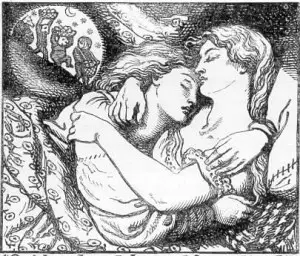
Christina Rossetti’s Goblin Market, is perhaps her most famous poem, read and taught since long ago earning a vast readership. It was first published in 1862 and has been constantly and equally a favorite among children, girls, men, and women, each of them enjoying it with its personalized interpretation. The poem begins with a smooth and soft flow and moves onwards carrying one’s thoughts from a slow to a fast track, dancing, running, and stumbling now and then with the change of rhythm. Going through Shakespeare’s verses, one, at times, feels as if walking in a garden with all sorts of flowers and herbs. While reading the poem Goblin Market, one experiences a walk through an orchard having trees laden with all sorts of luscious fruits as in the following:
‘Morning and evening
Maids heard the goblins cry:
‘Come buy our orchard fruits,
Come buy, come buy:
Apples and quinces,
Lemons and oranges,
Plump unpeck’d cherries,
Melons and raspberries,
Bloom-down-cheek’d peaches,
Swart-headed mulberries,
‘¦
‘Lie close,’ Laura said,
Pricking up her golden head:
‘We must not look at goblin men,
We must not buy their fruits:
Who knows upon what soil they fed
Their hungry thirsty roots?’
‘Come buy,’ call the goblins.’
2. Fairy Tales
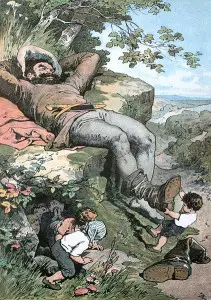
Fairy Tales is a children’s story book written by Terry Jones and illustrated by Michael Foreman. It was published by Pavilion Books in 1981 from England with an ISBN# 978-0-907516-03-3. There are many fantasy tales in the book like ‘Simple Peter’ who is a boy having a mirror which shows him as others see him. Another story is about a little girl who is offered a magical trip to Goblin City, but she is so fretful that the goblins ultimately take back the offer. The book was selected by Children’s Laureate Michael Rosen as one of the five best children’s stories of all time.
3. The Goblins Giggle, and Other Stories
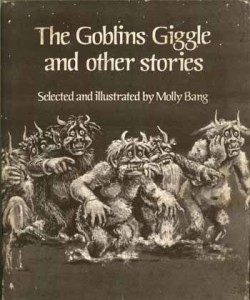
The Goblins Giggle, and Other Stories is a fiction written and illustrated by Molly Bang. It was published by Peter Smith Pub, Inc., in 1988. In fact, The Goblins Giggle and Other Stories is a work belonging to the public domain which simply means that it is no one’s specific domain; therefore, the illustrator gets its full credit. The story is about the fast thinking of the heroine about how to escape the goblins. Regarding its illustration, Molly Bang described ‘Since the stories were scary, I painted them in black and white on grey paper, and made most of them a good deal larger than the book would be, and the book became The Goblins Giggle.’
4. Harry Potter
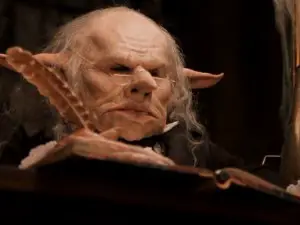
Goblins play an important role in J. K. Rowling’s Harry Potter series. They are dark-skinned, have long limbs, pointed beards, nose and ears, and some are bald headed like Griphook who is one of the many other goblins working at Gringotts. Harry Potter asks Rubeus Hagrid, ‘Hagrid, what exactly are these things?’ Hagrid replies ‘They’re goblins, Harry. Clever-as-they-come goblins but not the most friendly of beasts.’ Bill Weasley informs Harry Potter that ‘We are talking about a different breed of being. Dealings between wizards and goblins have been fraught for centuries … those wizards cannot be trusted in matters of gold and treasure, that they have no respect for goblin ownership.’
5. Andrew Lang’s Fairy Books
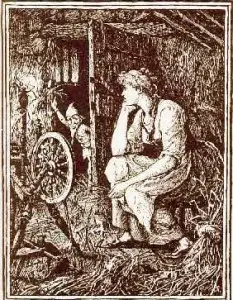
Comprised of tales from various cultures, Andrew Lang’s Fairy Books, also known as Andrew Lang’s Colored Fairy Books, or Andrew Lang’s Fairy Books of Many Colors, include 12 collections of fairy tales. They are: Blue Fairy Book (1889), Red Fairy Book (1890), Green Fairy Book (1892), Yellow Fairy Book (1894), Pink Fairy Book (1897), Grey Fairy Book (1900), Violet Fairy Book (1901), Crimson Fairy Book (1903), Brown Fairy Book (1904), Orange Fairy Book (1906), Olive Fairy Book (1907) and Lilac Fairy Book (1910). The Pink Fairy Book contains a story ‘The Goblin and the Grocer.’ It was about the goblin of a hardworking student and informed as ‘The Goblin belonged to him; for every Christmas Eve there was waiting for him at the grocer’s a dish of jam with a large lump of butter in the middle.’
6. Pilgrim’s Progress
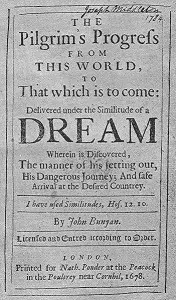
Goblins have been mentioned in as early works as the Pilgrim’s Progress which is also known as Pilgrim’s Progress from This World to That Which Is to Come. References to goblins are made in this book as ‘Men…we also saw there the hobgoblins, satyrs, and dragons of the pit.’ Pilgrim’s Progress is a religious allegory written by John Bunyan and published in England in February, 1678. It has been translated into more than 200 languages and has never been out of print.
7. The Elf Mound

The Elf Mound is a fairy tale written by the renowned Danish writer and poet, Hans Christian Andersen. It was published by C. A. Reitzel in April, 1845, in Copenhagen, Denmark. The story is about a party held in Elf Mound for the goblin chief of Norway and his two sons who are expected to select their brides from among the elves. Two lizards approach the mound and hear the elf maidens preparing for the dance. The dishes for the honorable guests include: ‘skewered frogs, fungus salad made of mushroom seed, and hemlock.’
8. A Book of Ghosts and Goblins
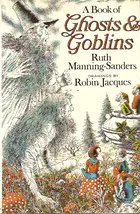
is a collection of 21 fairy tales from all over the world. The tales were collected and edited by Ruth Manning-Sanders. The book was first published by Methuen & Co. Ltd., in 1968 in the U.K. The book contains: ‘A Box on the Ear,’ ‘The Goblins at the Bath House,’ ‘Golden Hair,’ ‘Bring me a Light,’ ‘The Cook and the House Goblin,’ ‘The Skull,’ ‘The Tailor in the Church,’ ‘Pappa Great Nose,’ ‘Hans and His Master,’ and ‘The Golden Ball.’
9. The Hobbit
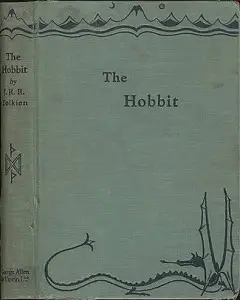
The Hobbit, also known as There and Back Again, is a fantasy children’s book written by J. R. R. Tolkein. It was published on September 21, 1937 and was nominated for the prestigious Carnegie Medal. The New York Herald Tribune awarded a prize for its being the best juvenile fiction. The book ranks among the famous classics in children’s literature. The story is set in the time between the dawn of Faerie and Dominion of Men. It’s about Hobbit’s endeavors in search of a treasure guarded by the Dragon called Smaug.
10. The Princess and the Goblin

The Princess and the Goblin is a children’s fantasy book written by George MacDonald and published by Strahn & Co. in 1872. The story is about the eight-year-old Princess Irene whose mother has died and the father King is only too preoccupied with State affairs. She is taken care of by a nursemaid Looty who is her only company. The princess does not know about the goblins, but Looty knows that the goblins, once human beings, were forced to live underground for some reason, and their new lifestyle distorted them physically and mentally. Goblins chased the princess and Looty, but they were saved by a miner’s boy, Curdie, who sung a song loudly and made the goblins run away.
Conclusion:
Contrast, diminution, and exaggeration are the techniques used in poetry, painting, and many other art forms to project a desired subject. Moonshine or a white horse stands out vividly against a dark background. Goblins are similarly the diminutions with contrasting features to project the human beauty, temperament, intellect, appearance, composure and many other distinguishing features of human beings. A mediocre human being appears an intellectual when compared with a goblin, and this is what an expert writer aims at achieving. Goblins were created by human beings to enhance their self-esteem.


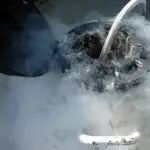
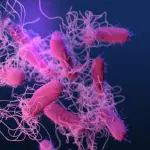






Leave a Reply